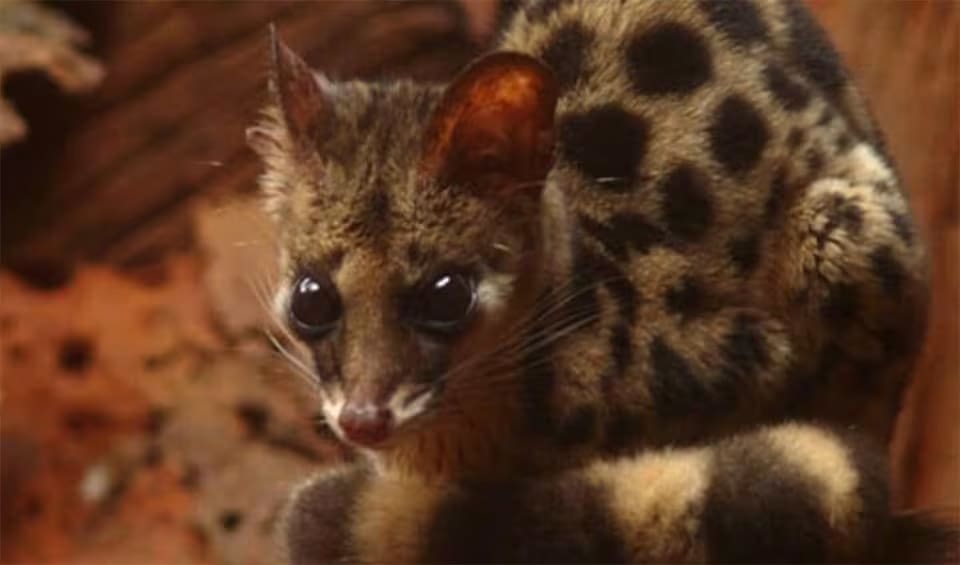Prionodon- Asia linsangs
Body of a cat, the face of a possum – meet the mysterious Asiatic linsangs!
These elusive creatures are often likened to cats in appearance and predatory behavior, though they are more closely related to the Viverridae family, which includes civets and genets. These species, the Banded Linsang (Prionodon linsang) and the Spotted Linsang (Prionodon pardicolor), are native to the lush evergreen tropical forests of Southeast Asia, each with its own unique geographical range that does not overlap with the other. This separation ensures minimal competition between the two species for resources.
Inhabiting the dense tropical forests, Asiatic linsangs are masters of secrecy, contributing to the limited knowledge about their behavior and ecology. They demonstrate remarkable adaptability in their habitat preference, navigating both the arboreal realms of the forest canopy and the forest floor with equal finesse. This arboreal nature is complemented by their ability to hunt on the ground, showcasing their versatility as predators.
Asiatic linsangs are characterized by their sleek, elongated bodies, short legs, and long tails, which aid in their agility and balance, both in trees and on the ground. Their fur is marked with striking patterns — the Banded Linsang with bands and the Spotted Linsang with spots — which provide camouflage within the dappled light of their forest habitats.
Solitary by nature, these nocturnal predators exhibit a strong preference for living and hunting alone, except during mating seasons. Their diet primarily consists of small nesting birds, rodents, and insects, which they adeptly hunt using their keen senses of sight and hearing. The Asiatic linsangs are known to inhabit hollow tree trunks, where they create nest-like structures lined with dry leaves and twigs, not only for resting during the day but also for rearing their young.
Species in this genus
Spotted linsang
Body of a cat, face of a possum – meet the mysterious Asiatic linsangs


